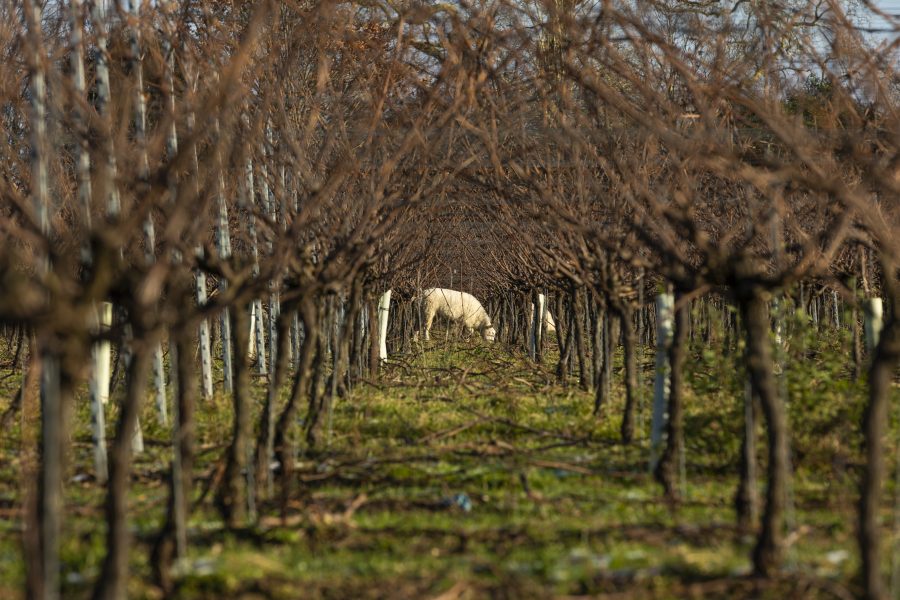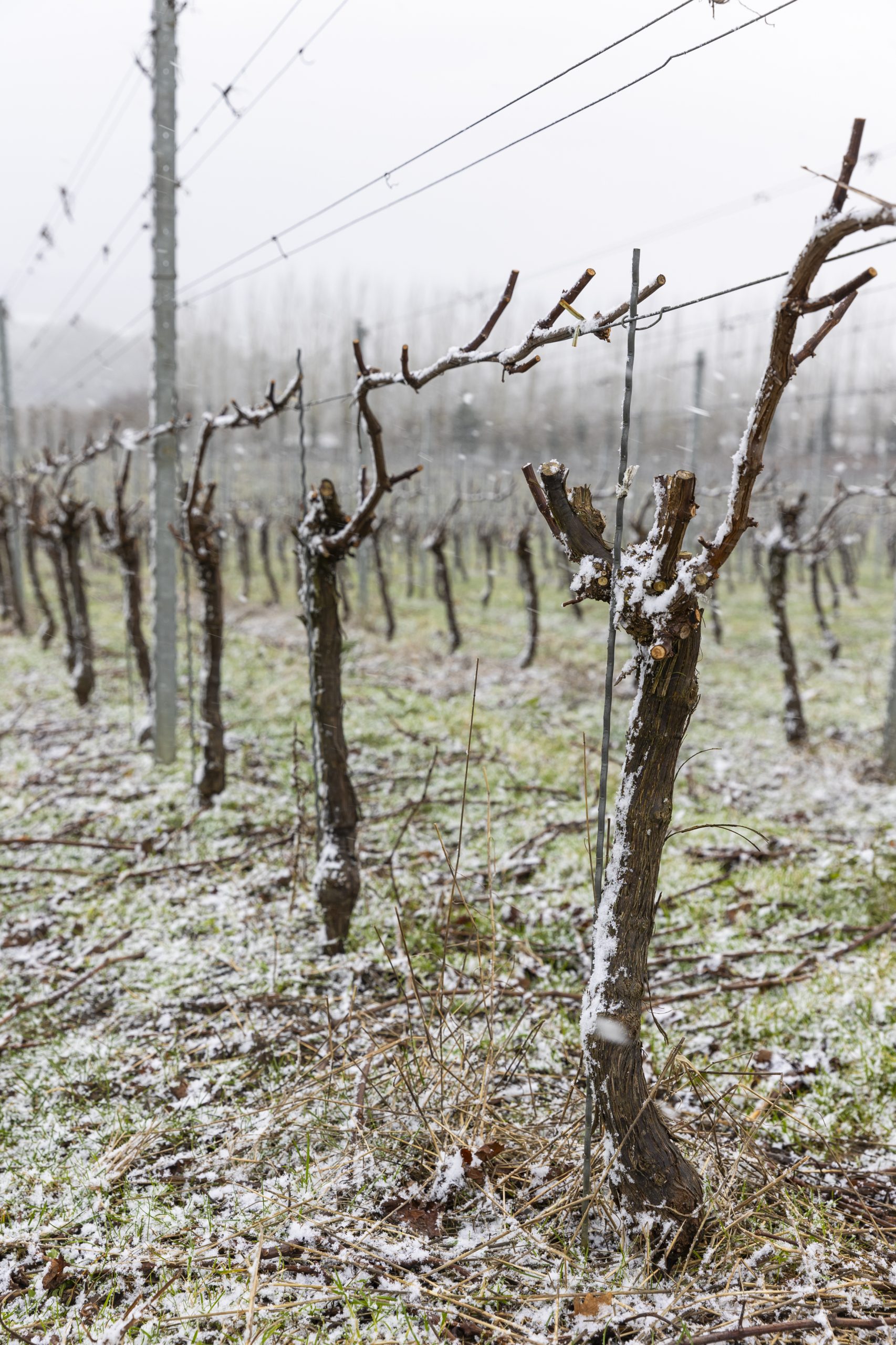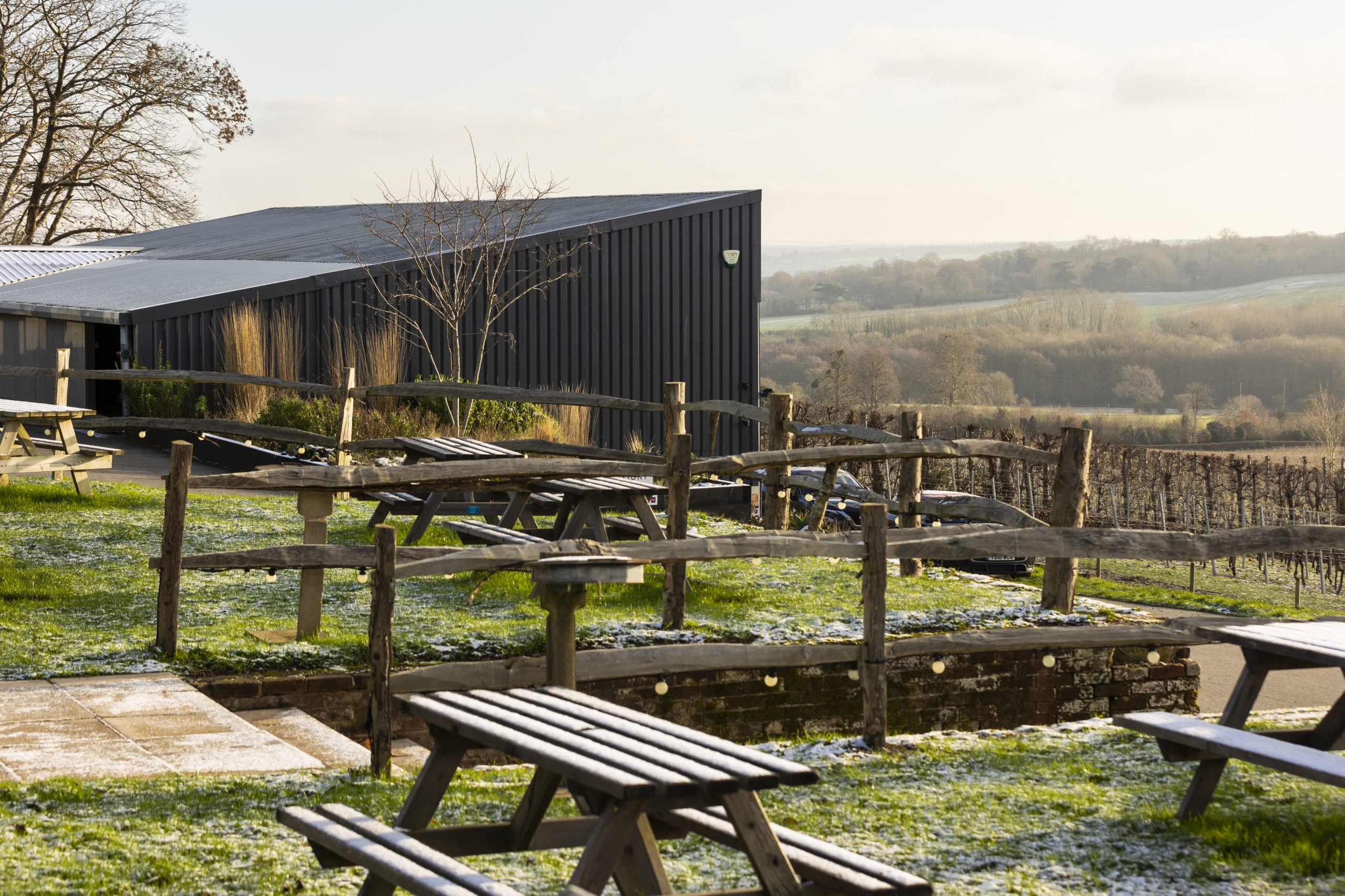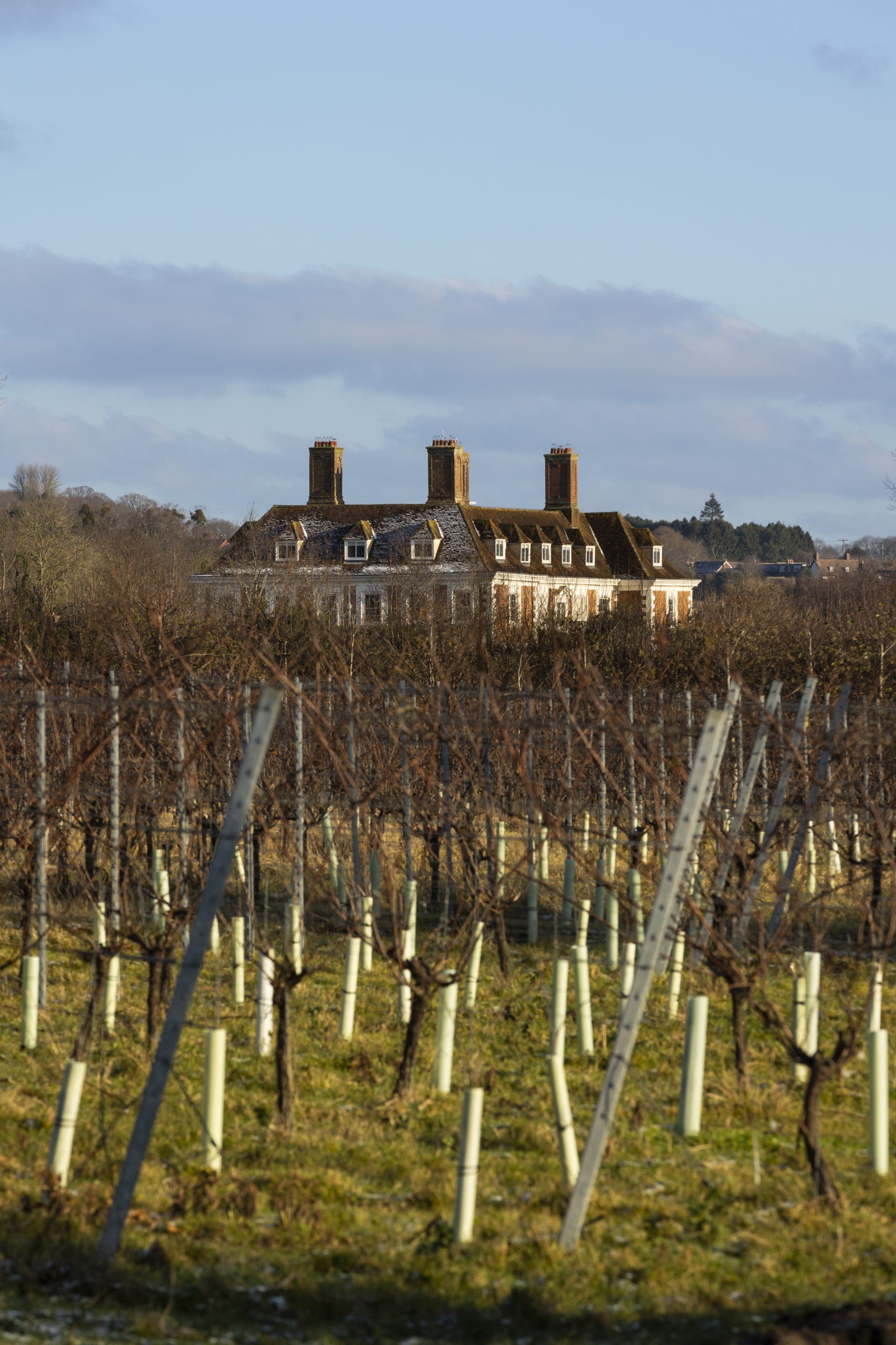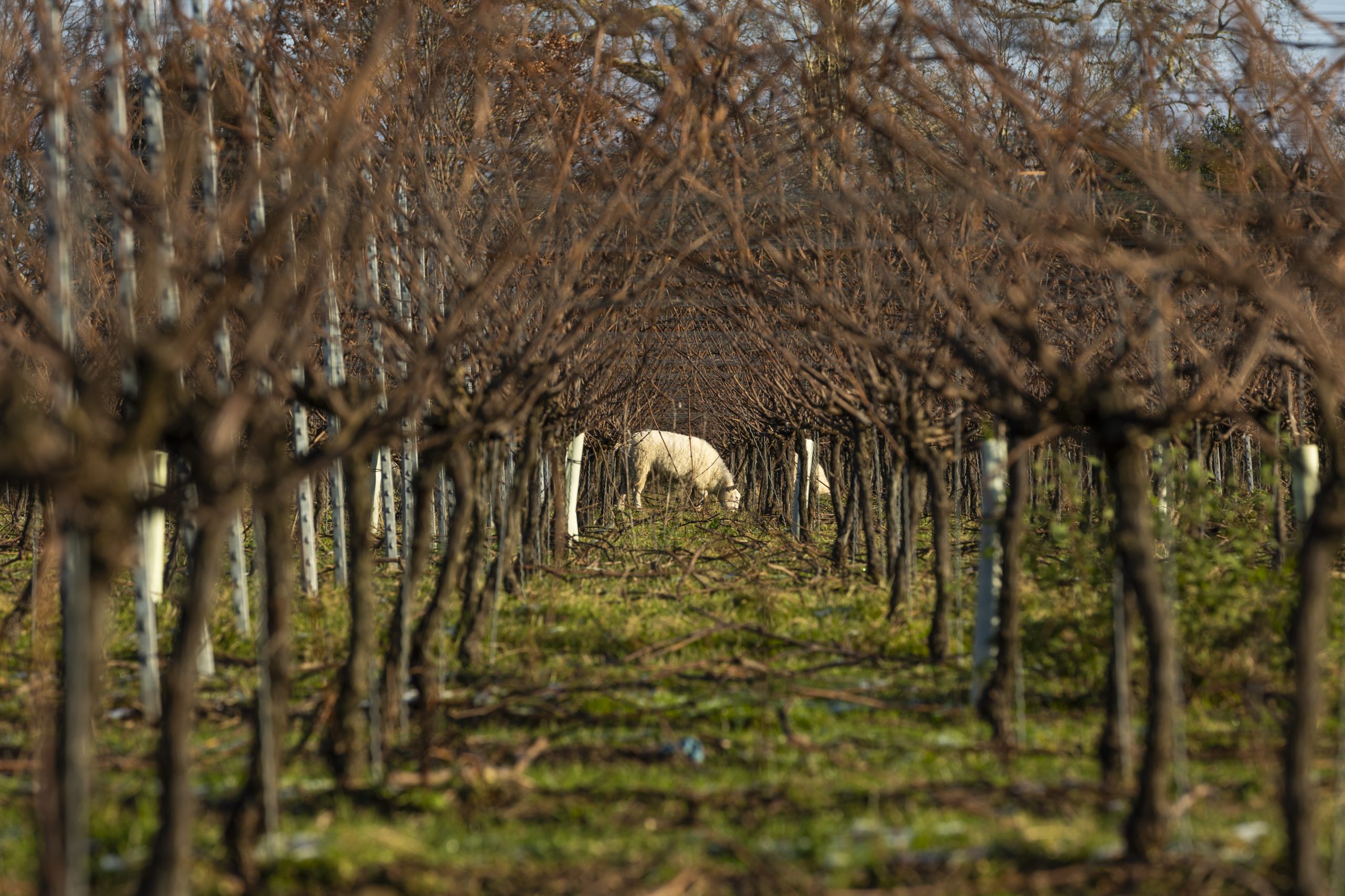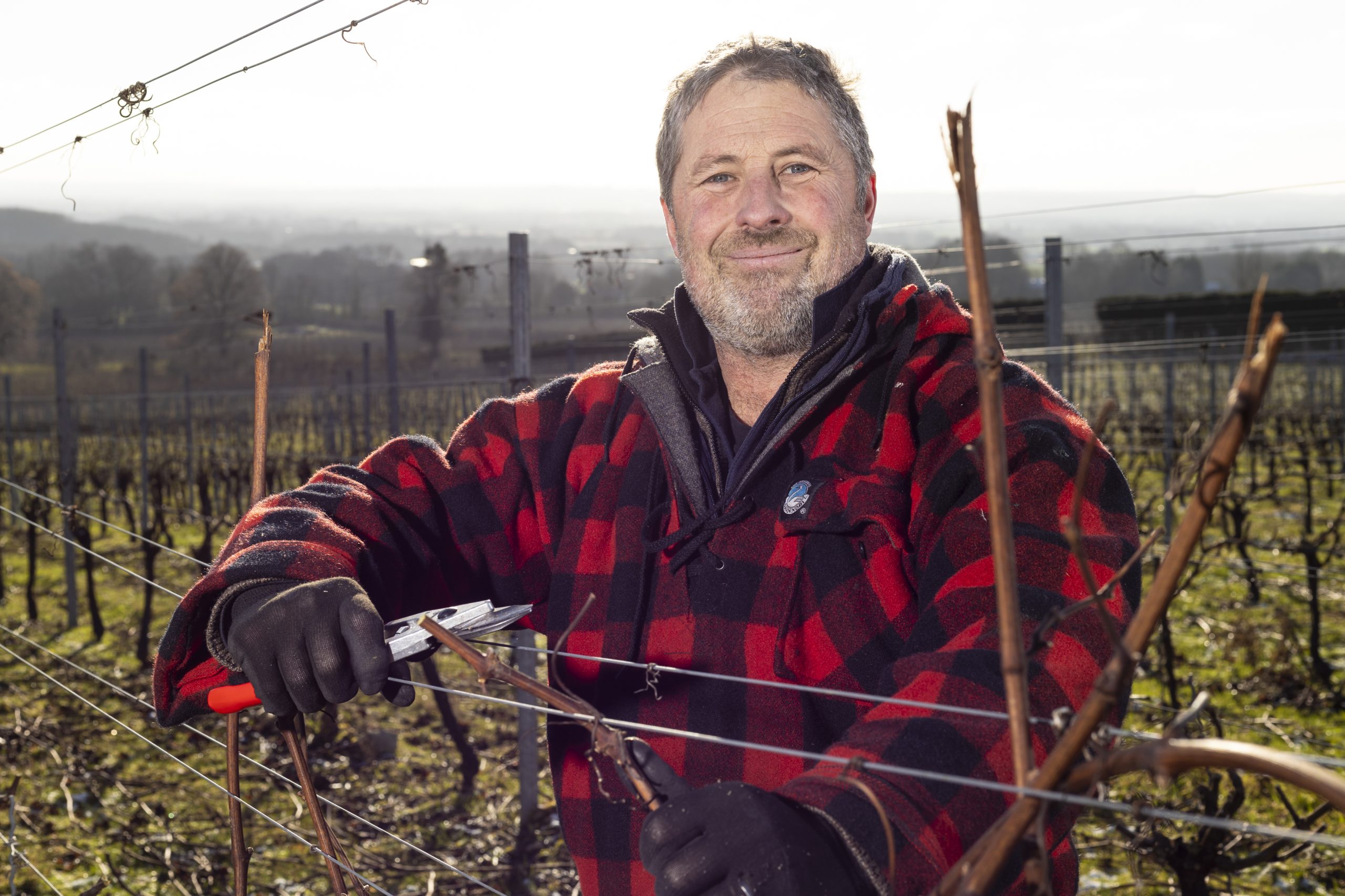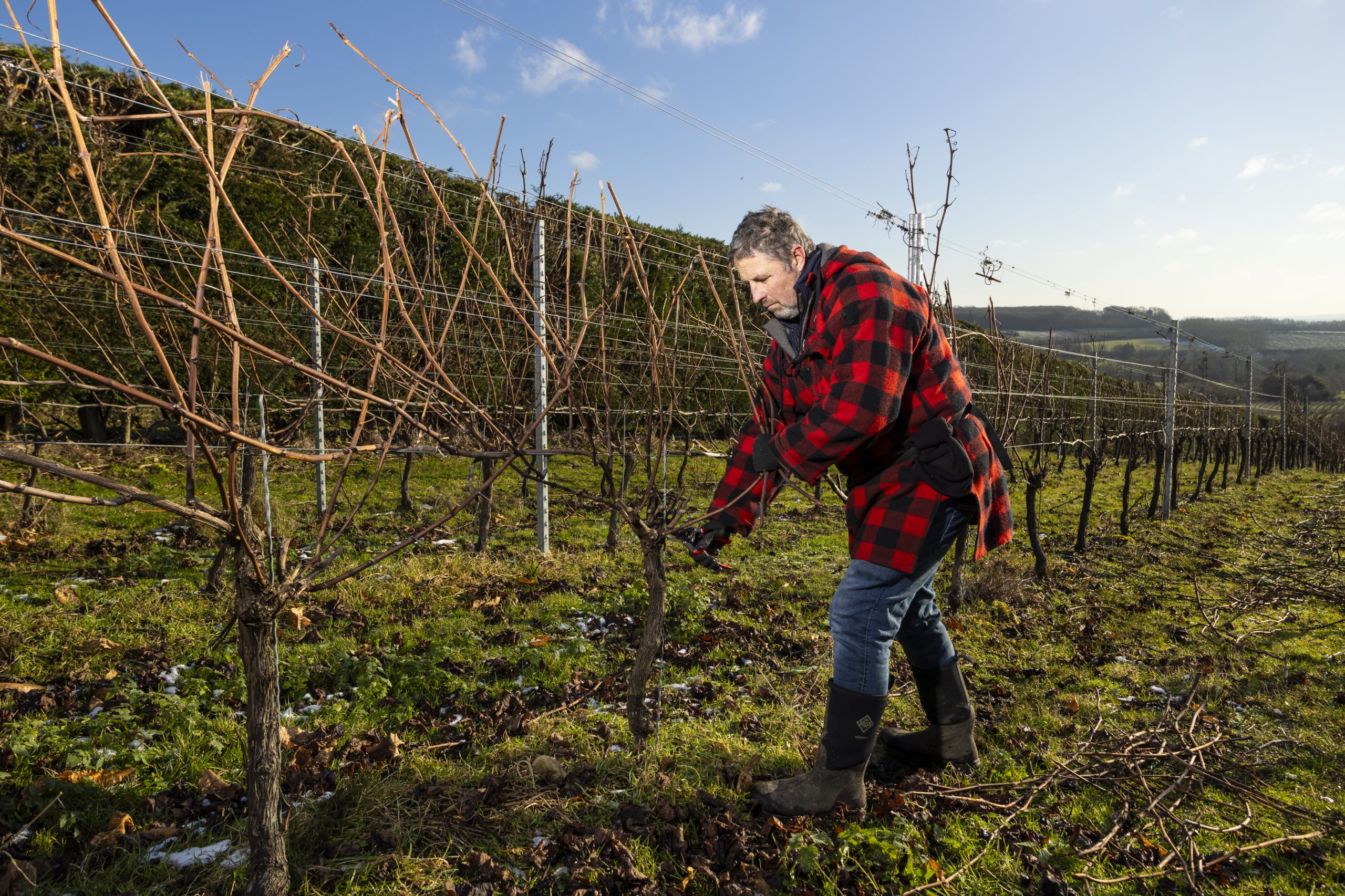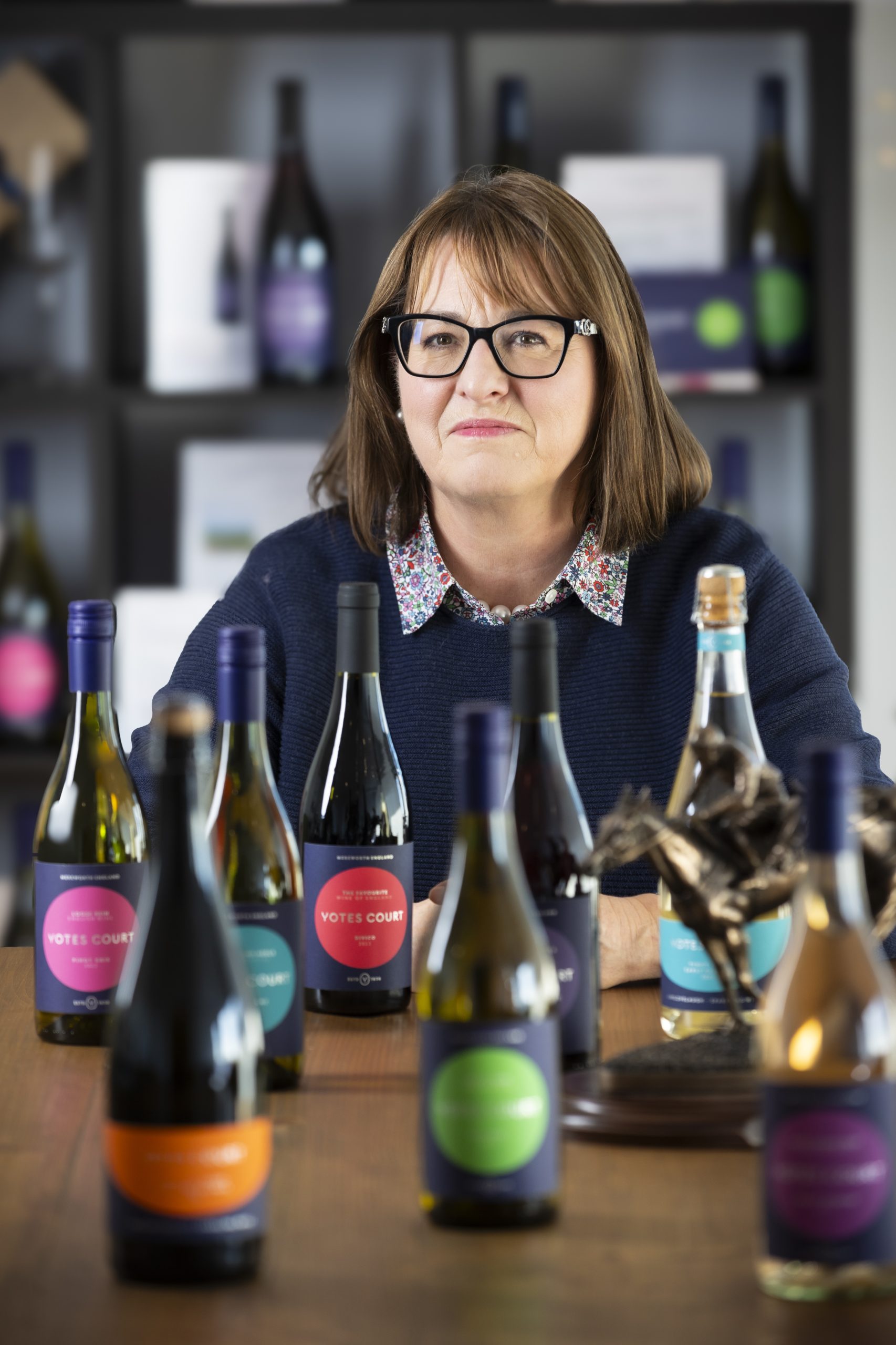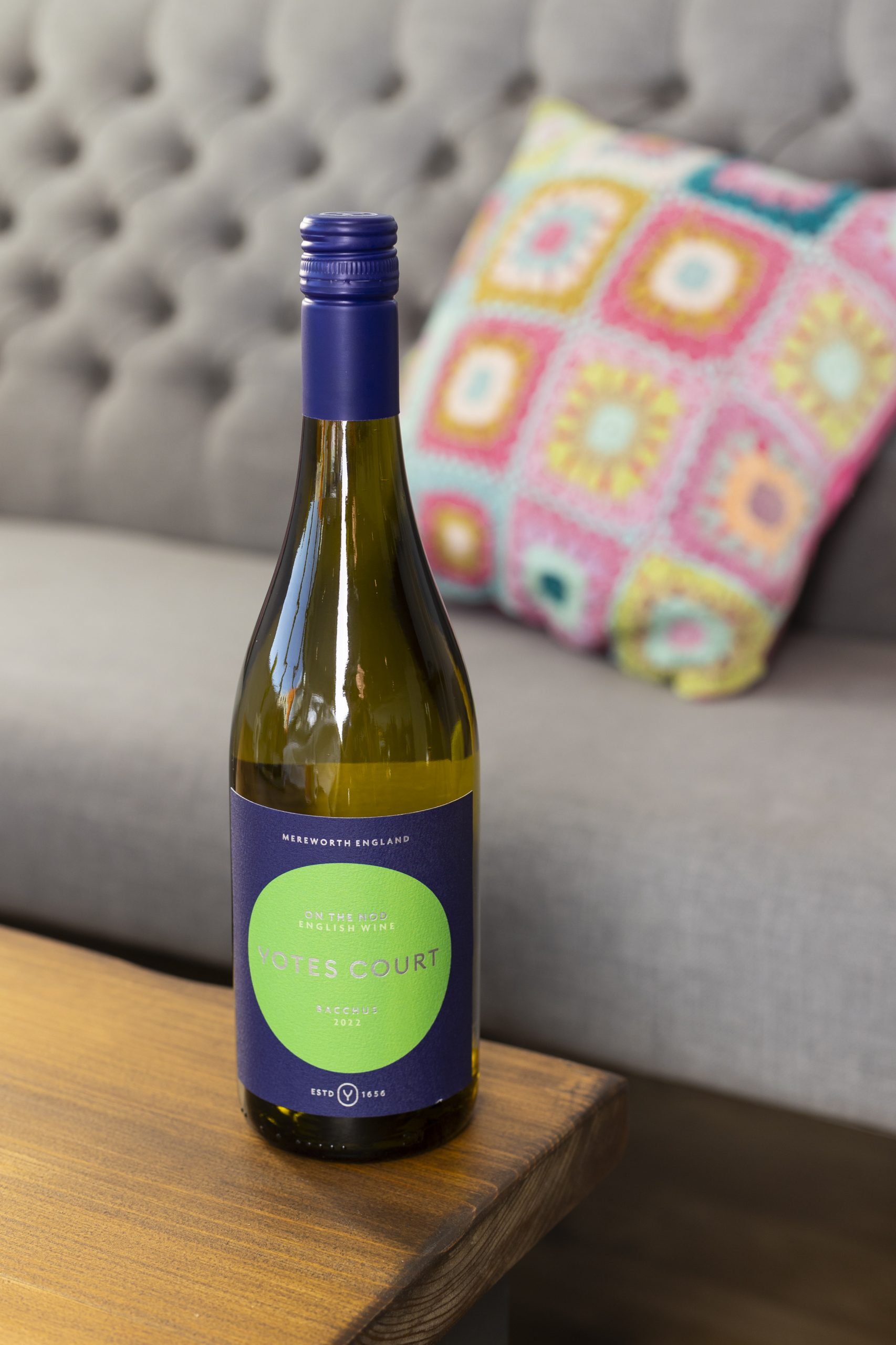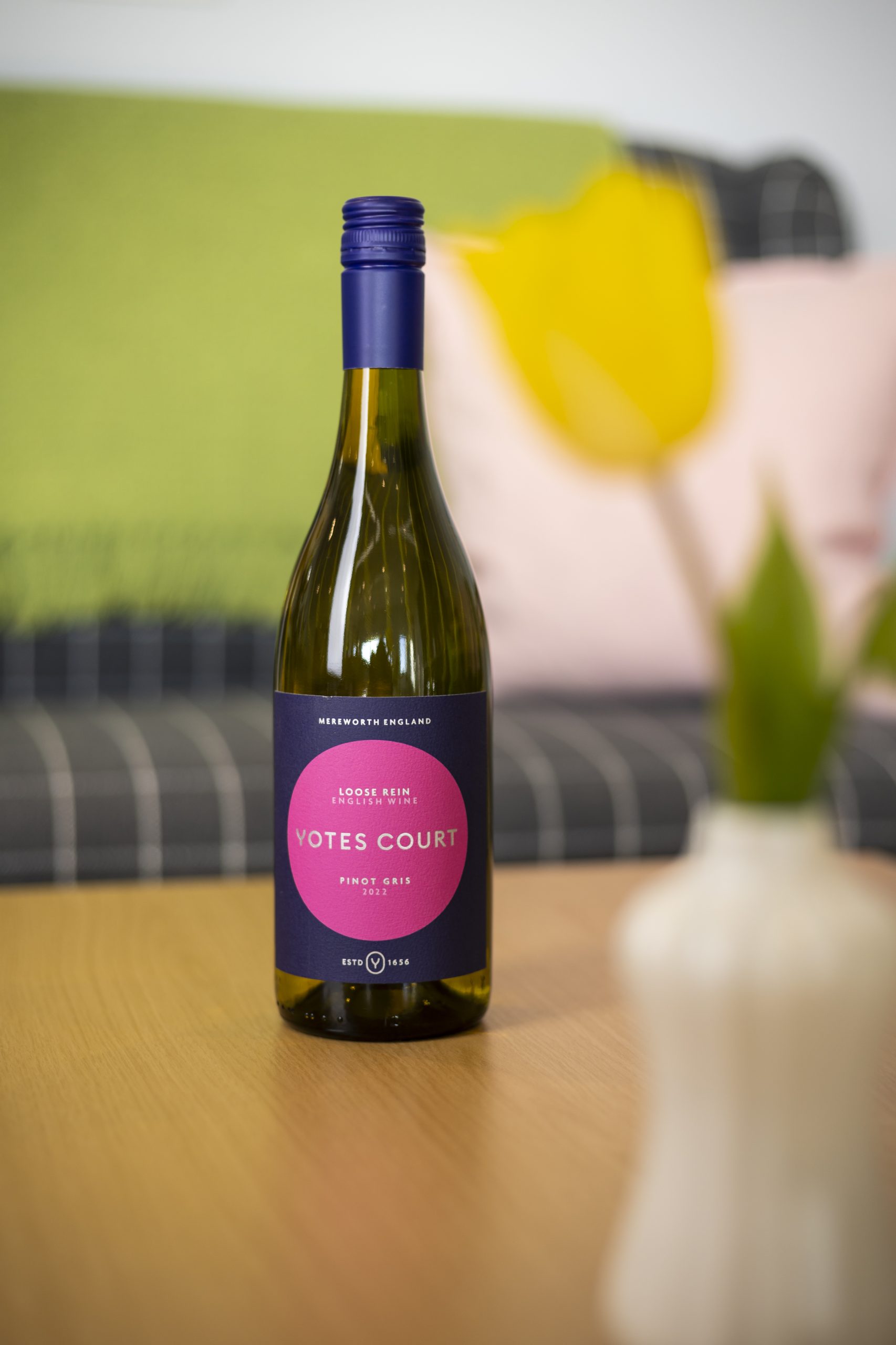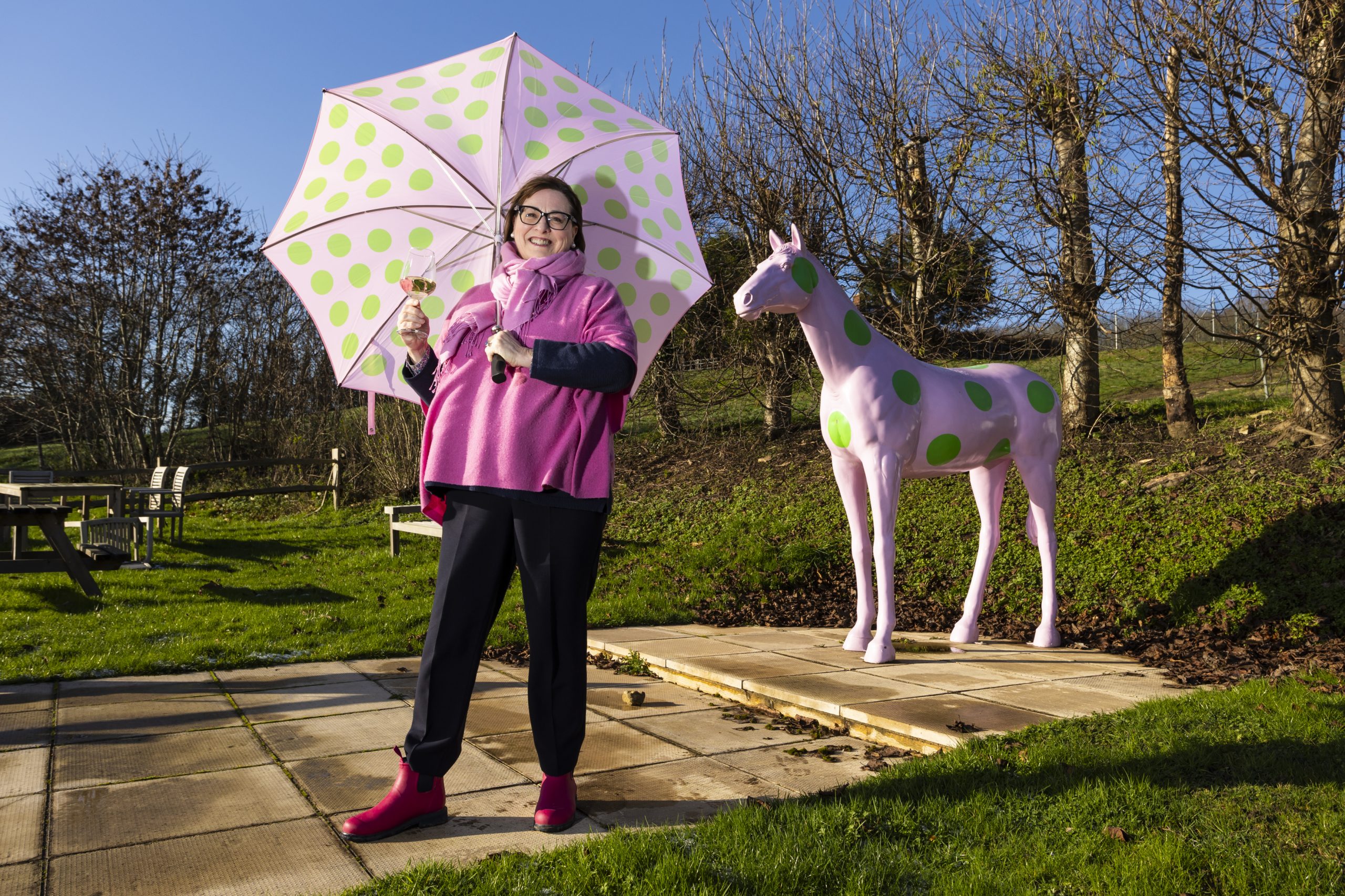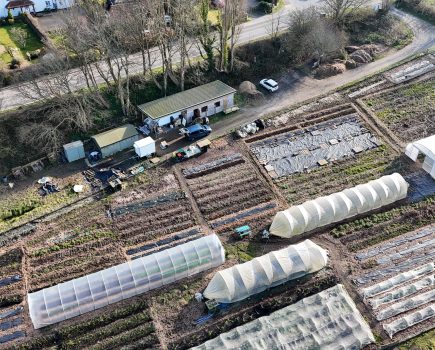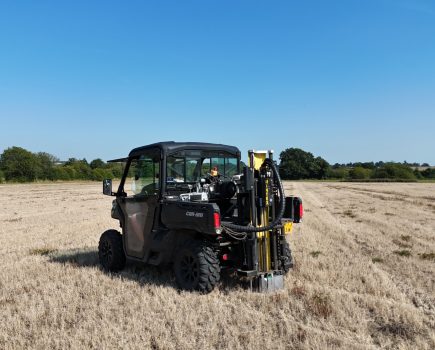Yotes Court in Kent is building for the future from the soil up. Writes Rebecca Farmer, Editor of Vineyard magazine.
The view from the tasting room at Yotes Court Vineyard is simply stunning, and the more time that is spent at this Kentish location the more fascinating it becomes.
Owner Susannah Ricci and vineyard manager Tony Purdie have applied skill, imagination and hard work to turn Yotes Court into a flourishing vineyard business, offering a fantastic brand image and producing unique wines with a focus on individuality and exceptional quality.
Susannah and her husband purchased the Grade I listed Yotes Court more than a decade ago. Becoming the caretaker of such an important piece of history brings with it great responsibility and the house and gardens have been lovingly restored. When former orchard land adjoining Yotes Court became available Susannah wanted it to stay in agricultural production and in a sense connected with the original estate.
There are several ways that visitors can enjoy Yotes Court Vineyard. From March to October the vineyard is open Wednesday to Sunday, offering visitors the chance to book a vineyard tour followed by a structured tasting, while a self-guided tasting is also available. The cellar door at Yotes Court means visitors are always able to take home a bottle or two.
From the top of the vineyard looking down across the vines, with the Kent countryside and the Bidborough Ridge in the distance, it is easy for the visitor to become fully immersed in the experience. The website declares that the ethos at Yotes Court is “unfussy, inclusive and fun”, but beneath that is the sense that the entire team is striving for even greater excellence both in the vineyard and the whole experience of wine.
In 2016 over 95 acres were planted with 128,000 vines of Pinot Noir Chardonnay and Pinot Meunier. “There was a small bit planted in 2017 because that part of the land needed a little green manure to get it up to speed,” explained Tony. At the time this was the single largest planting of vines in the UK.
After purchasing the land, Susannah sought the help of experts to help her bring the land into production and make the best possible use of it. “I knew I needed to get the right people and ask the right questions,” she said.
The ‘right person’ was Stephen Skelton MW, who declared the site absolutely perfect for vines.
“Yotes Court was, for me, an ideal site,” said Stephen. “It was below 100m above sea-level, a south-facing slope, well sheltered and frost-free. Added to that was the soil, which had a good ragstone content, aiding drainage and heat retention. The site was mainly divided up into sensible sized blocks for additional shelter. It was planted with a high density of vines which both helps ripening and increases yield. Results to date have been very encouraging.”
After advising on varieties and clone selection among other things, Stephen put Susannah in touch with vineyard manager Tony Purdie, who relocated from New Zealand to Yotes Court and has managed the vineyard since that initial planting.
“Key to the operation at Yotes Court is that the site grows amazing grapes,” said Tony. With this in mind Susannah realised that it was necessary to create a connection between the vineyard and the finished product. “I didn’t want Tony to get bored,” she said with a smile.
“I tried the still Pinot Gris and the Pinot Blanc from Stopham, and I thought they were so good,” said Susannah. The quality of these wines showed the possibilities for still wine production in England and led Susannah and Tony to begin the vineyard expansion at Yotes Court. In 2018 Pinot Blanc and Bacchus were planted and in 2019 Pinot Gris was also planted; there is also a small parcel of Divico vines.
The new plantings expanded the area under vine by another 10 acres. This land had previously been planted in a maize and spring wheat rotation and there was also an area planted with apricot trees that were suffering from an infection. “This land is 148m above sea level but the land is too good for arable production,” said Tony.
The expansion has allowed Yotes Court to launch both still and sparkling wines under their own label. The branding is unusual in that each wine is individual but is also clearly part of the Yotes Court family.
For the branding, Susannah drew inspiration from the race horses she owns, which adds to the feeling of connection between the wines. “The sparkling wines are all named after winning horses and the still wines are all named after racing terms,” she said.
LiveLoveLaugh is an early release traditional method sparkling wine made from Pinot Gris grapes. First produced in 2021, Tony described it as a fruit-driven, easy drinking sparkling wine. It has proved very popular at the cellar door and is sold in pubs and restaurants across London.
For the 2022 season the vines required special care to ensure the grapes maintained the correct balance of sugars and acid while holding on to the fruit flavours that make this wine so noticeably different. The secret, Tony explained, was canopy management. The winemaker is Nick Lane at Defined Wine in Canterbury.
Yotes Court sits on the Greensand Ridge. “The ragstone-based soil weathers down to sand and clay,” said Tony. “The clay soils contain colloids and this allows the soils to hold onto nutrients that are then plant available, but the best thing about Greensand soils is that they are free draining.”
Tony was instrumental in establishing the WineGB pruning competition which took place at Yotes Court in 2022 and 2023. The venue for the 2024 competition has not been decided but Tony will once again be part of the judging panel.
“In the formative years you have to be careful about competition from weeds and it is about letting the vines grow into their natural space, but once the vines are mature vine balance becomes the focus. We could cause over vigour in the vines and reduce crop production. A vine can be tipped into a vegetative state which can be quite hard to get back from.
“One way to get this balance is to lay a few more buds per metre per vine row and spur pruning will achieve this. Spur pruning will balance the crop load and shoot production. Spur pruning reduces the bunch size and bunch compaction while increasing the skin/juice ratio for quality wine production. Other benefits are a more even bud burst and greater plant available reserves in the trunk and cordon,” Tony explained.
Spur pruning requires more intensive canopy management as this will determine the amount of heat accumulation in the canopy. “Heat is more important than light; the temperature of the bud influences whether bud primordia becomes fruit, tendril, leaf or bud. That is why it is trickier to get big crops in cooler climates,” Tony added. It’s not an easy solution. “In a really hot year it is possible to remove too much leaf which could expose the berries to sunburn, while leaving lots of leaf cover can keep acids high in the grapes.”
Tony has a major focus on producing clean fruit and walks through the vineyard every day. As he explains the processes across the vineyard with such an easy manner, it is clear to see why so many people have turned up to undertake pruning in the vineyard on a snowy January day. “People just love working for Tony,” said Susannah confidentially.
“We have a whole team of retirees who have an amazing array of past careers, and they help out at harvest and at pruning,” she added. It is clear that as the vineyard matures, Yotes Court is also putting down deep roots in the community. The summer attracts university students and people who are keen to get outside.
At Yotes Court the aim is for the vines to produce on average 10 tonnes per hectare, ensuring that the vineyard is producing enough fruit from a business perspective but also that quality remains exceptionally high.
When the vines were young, herbicides were used, “but now the vines are established we are heading to a regenerative style of viticulture,” said Tony. “I have been passionate about sustainable wine growing for many years and we are accredited under the SWGB scheme.”
Winter grazing sheep is part of the move to regenerative viticulture at Yotes Court. Tony was unwilling to use sheep amongst young vines but now the sheep are grazed within 25 hectares of the vineyard. “Being from New Zealand it is nice to see sheep in the vineyard; they are a great way of nutrient recycling,” he said. “The sheep also clear the ground over the winter, allowing for greater airflow which in turn helps protect against frost in the spring.”
Talking about pests in the vineyard inevitably raises the subject of spotted wing drosophila, but Tony pointed out that one pest not seen in the UK is grape vine mealy bug. “I spent 30 years in New Zealand panicking about mealy bug because it is a vector for virus. The whole world has mealy bug problems except the UK,” he said.
Regenerative methods can bring unexpected consequences. Tony explained: “We have found that cut worm caterpillar is now a problem. It doesn’t like bare ground and sterile soils so by planting cover crops and improving soil health, pests that haven’t been on one’s radar in the past suddenly become a problem.
“Cutworm caterpillars come out in the spring and crawl along the wire and just eat the whole bud away. It is possible to attribute this damage to blind budding, which can be caused by many different diseases, or to other damage such as deer or birds, and because these caterpillars are nocturnal unless you go out at night you will not see just how destructive they are. It is just one more thing to be mindful about.
“One of the problems in the UK is downy mildew. If you lose your canopy to downy mildew you lose the ability to ripen the fruit. It is important to keep on top of the spray programmes and to monitor.”
Discussing the 2024 season and what this may mean for the vines, Tony said: “We had a cloudy, wet summer which produced quite big canopies, so the canes we are laying down are quite vigorous. We had above-average heat during flowering in 2023 which is around the time the bunch primordia set, so there is the potential for another good season.
“The vines are in their ninth season and that means that the root structure is well established, so we can be fairly certain if we have a good initiation the year before we will get a good crop the following year, but there are numerous other factors that will influence this.”
As the snow falls on my journey down past the vines it is obvious that much has changed at Yotes Court since the initial planting. This beautiful countryside and those who are connected with this vineyard and this brand are taking every opportunity to grow with those vines as they move into maturity, taking each new step in a well thought out manner and looking to achieve excellence in every way.
- Tony Purdie
- Susannah Ricci

